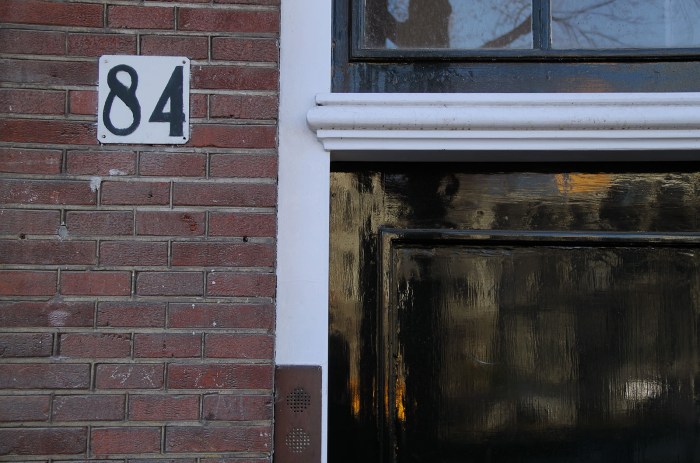Embarking on an in-depth exploration of what is the most common cause of leaking compression fittings, this discourse delves into the intricacies of these essential plumbing components, unraveling the factors that contribute to their integrity and functionality.
Delving into the realm of compression fittings, we elucidate their applications, delve into the materials employed in their construction, and examine the critical role of sealing washers and O-rings in preventing leaks.
What is the Most Common Cause of Leaking Compression Fittings?

Compression fittings are a common type of pipe fitting used in plumbing and other fluid handling applications. They are designed to create a leak-proof seal by compressing a sealing washer or O-ring against the pipe or tube. However, even the best compression fittings can leak if they are not properly installed or maintained.
There are a number of factors that can contribute to leaking compression fittings. These include:
Identify the Common Causes of Leaking Compression Fittings
Explain the Concept of Compression Fittings and Their Applications
Compression fittings are a type of pipe fitting that is used to connect two pipes or tubes together. They are made up of three main components: a nut, a ferrule, and a sealing washer or O-ring. The nut is tightened onto the ferrule, which compresses the sealing washer or O-ring against the pipe or tube.
This creates a leak-proof seal.
Compression fittings are used in a wide variety of applications, including plumbing, gas lines, and hydraulic systems. They are a popular choice for DIY projects because they are easy to install and do not require any special tools.
Provide a List of Typical Materials Used in Compression Fittings
The most common materials used in compression fittings are:
- Brass
- Copper
- Stainless steel
- Plastic
Brass is the most common material used in compression fittings because it is strong, durable, and corrosion-resistant. Copper is also a good choice for compression fittings, but it is more expensive than brass. Stainless steel is the most corrosion-resistant material, but it is also the most expensive.
Discuss the Role of Sealing Washers and O-rings in Preventing Leaks
The sealing washer or O-ring is the most important component of a compression fitting. It is what creates the leak-proof seal. Sealing washers are typically made of rubber or plastic, while O-rings are made of rubber or silicone.
It is important to use the correct size and type of sealing washer or O-ring for your compression fitting. The sealing washer or O-ring should be slightly larger than the outside diameter of the pipe or tube. It should also be made of a material that is compatible with the fluid that is being used.
Examine the Impact of Installation Errors on Leaks
Elaborate on the Importance of Proper Fitting Preparation and Assembly
The most common cause of leaking compression fittings is improper installation. It is important to follow the manufacturer’s instructions carefully when installing compression fittings.
Before installing a compression fitting, you should first clean the pipe or tube and the fitting. You should also apply a thread sealant to the threads of the fitting. This will help to create a leak-proof seal.
Explain the Consequences of Overtightening or Undertightening Fittings
Overtightening a compression fitting can damage the sealing washer or O-ring. This can cause the fitting to leak. Undertightening a compression fitting can also cause a leak. The fitting will not be able to create a leak-proof seal if it is not tightened enough.
Discuss the Effects of Misaligned or Damaged Components
Misaligned or damaged components can also cause compression fittings to leak. If the components are not aligned properly, the sealing washer or O-ring will not be able to create a leak-proof seal. Damaged components can also cause leaks.
Analyze the Effects of Environmental Factors on Leaks
Explain How Temperature Fluctuations Can Affect Fitting Performance
Temperature fluctuations can affect the performance of compression fittings. Extreme heat or cold can cause the sealing washer or O-ring to deteriorate. This can lead to leaks.
Discuss the Impact of Corrosion and Chemical Exposure on Fittings
Corrosion and chemical exposure can also damage compression fittings. Corrosion can weaken the metal components of the fitting. Chemical exposure can damage the sealing washer or O-ring.
Elaborate on the Effects of Vibration and Stress on Fitting Integrity
Vibration and stress can also damage compression fittings. Vibration can cause the fitting to loosen. Stress can cause the fitting to crack.
Describe Methods for Preventing Leaks in Compression Fittings, What is the most common cause of leaking compression fittings
Provide a Step-by-Step Guide to Proper Fitting Installation
To prevent leaks in compression fittings, it is important to install them properly. Here is a step-by-step guide to proper fitting installation:
- Clean the pipe or tube and the fitting.
- Apply a thread sealant to the threads of the fitting.
- Insert the pipe or tube into the fitting.
- Tighten the nut onto the ferrule.
- Do not overtighten the nut.
Explain the Use of Thread Sealants and Anti-seize Compounds
Thread sealants and anti-seize compounds can help to prevent leaks in compression fittings. Thread sealants are applied to the threads of the fitting. Anti-seize compounds are applied to the metal components of the fitting.
Thread sealants and anti-seize compounds help to create a leak-proof seal. They also help to prevent the fitting from seizing up.
Discuss the Importance of Regular Maintenance and Inspection
Regular maintenance and inspection can help to prevent leaks in compression fittings. It is important to check the fittings regularly for leaks. You should also tighten the nuts on the fittings if they become loose.
Provide Troubleshooting Tips for Leaking Compression Fittings
Create a Table Outlining Common Leak Symptoms and Their Potential Causes
| Leak Symptom | Potential Cause |
|---|---|
| Leak at the nut | The nut is not tight enough. |
| Leak at the ferrule | The ferrule is damaged. |
| Leak at the sealing washer or O-ring | The sealing washer or O-ring is damaged or worn. |
Explain How to Isolate and Identify the Source of a Leak
To isolate and identify the source of a leak, you can use a soap and water solution. Apply the soap and water solution to the fitting. The bubbles will show you where the leak is coming from.
Offer Guidance on Repairing or Replacing Leaking Fittings
If you find a leak in a compression fitting, you can try to repair it. You can tighten the nut on the fitting. You can also replace the sealing washer or O-ring.
If the fitting is damaged, you will need to replace it. To replace a compression fitting, you will need to cut the pipe or tube. You will then need to insert the new fitting into the pipe or tube. You will then need to tighten the nut on the fitting.
FAQ Guide
What are the typical materials used in compression fittings?
Compression fittings commonly utilize materials such as brass, copper, stainless steel, and plastic.
How does overtightening compression fittings impact their performance?
Overtightening compression fittings can damage the sealing components, leading to leaks and compromising the fitting’s integrity.
What is the role of thread sealants in preventing leaks in compression fittings?
Thread sealants act as a barrier between the threads of the fitting and the pipe, preventing leaks by filling any gaps and enhancing the seal.

